
Improving translation in neuroscience
By April Cashin-Garbutt
Building bridges between industry and academia is key to improving translation in neuroscience. To help foster these vital collaborations, the Sainsbury Wellcome Centre was delighted to host a British Neuroscience Association symposium, which marked the first in-person event by the BNA since the start of the Covid-19 pandemic.
As BNA Chief Executive Anne Cooke remarked, industry and academia can often seem like two worlds far apart, but by building a community and working together we can bridge the gap and make a difference. Professor Tom Otis, Chief Scientific Officer at SWC, echoed these thoughts and reinforced the importance of the continued partnership between SWC and BNA to explore solutions to the challenges of improving translation in neuroscience.
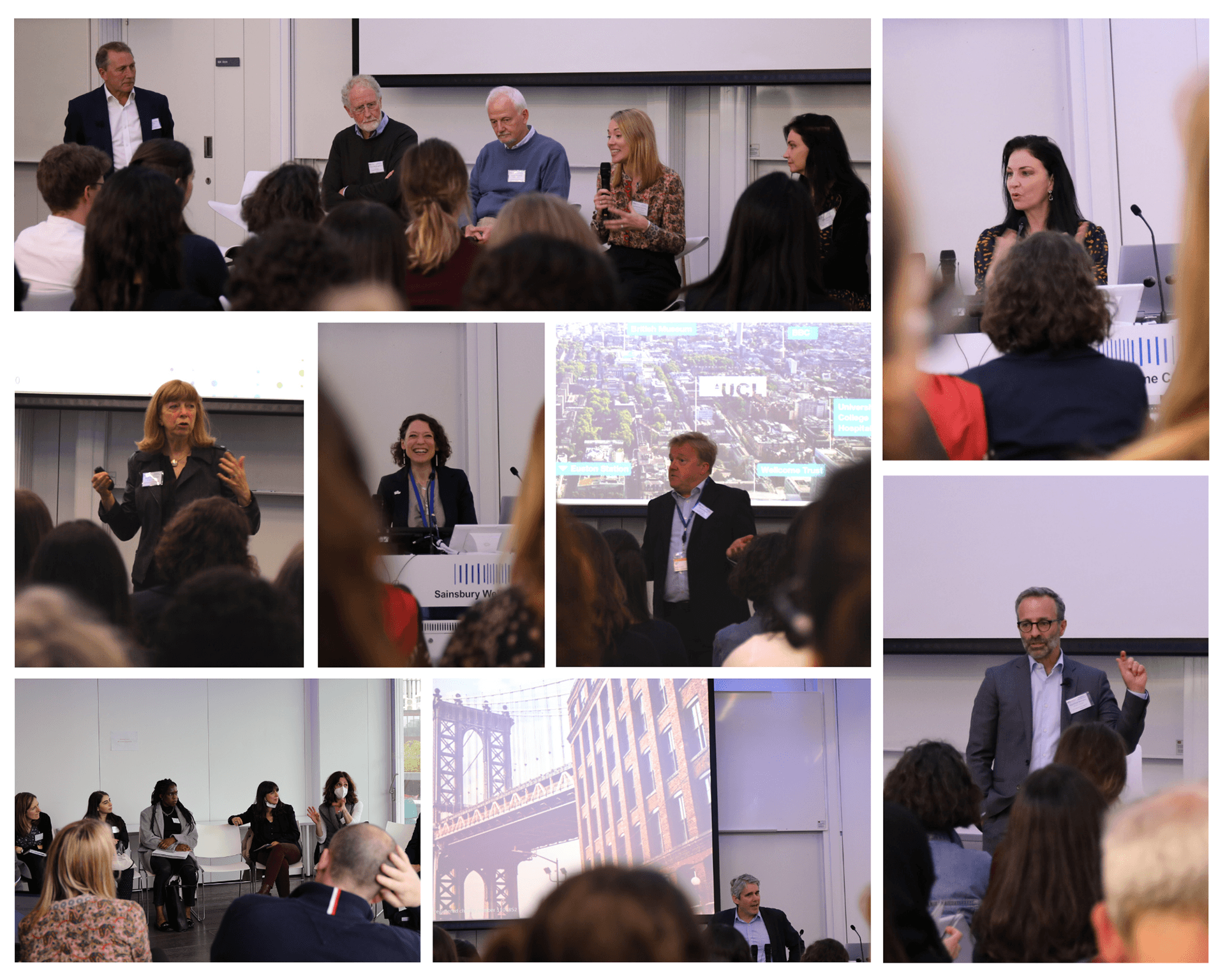
What good translation between industry and academia looks like – a perspective from industry
Jina Swartz, MSD, highlighted many of these challenges in her talk where she spoke candidly about her personal experience of moving from academia to industry. Jina emphasised that many academics “don’t want to move to the dark side,” but that industry and academia shouldn’t be thought of as two sides of the fence but instead as part of the same relay team passing the baton.
This ‘bench to bedside’ process however takes several years and between basic scientific research and clinical research exists the ‘valley of death’ where many promising discoveries meet their demise. Jina spoke of the key requirements that must be in place to cross the dreaded ‘valley of death’ and move discoveries into new treatments, diagnostics and preventions, including:
- Reproducibility of academic studies and the need for demonstrating reliability of data
- Awareness of the structural differences between industry and academia and also their investigator base
- Technical expertise including the deep knowledge in academia and breadth in industry
- Support both in terms of funding and intellectual property
- Understanding of regulatory framework and requirements
- Managing risk-taking and focus, including knowing when to stop
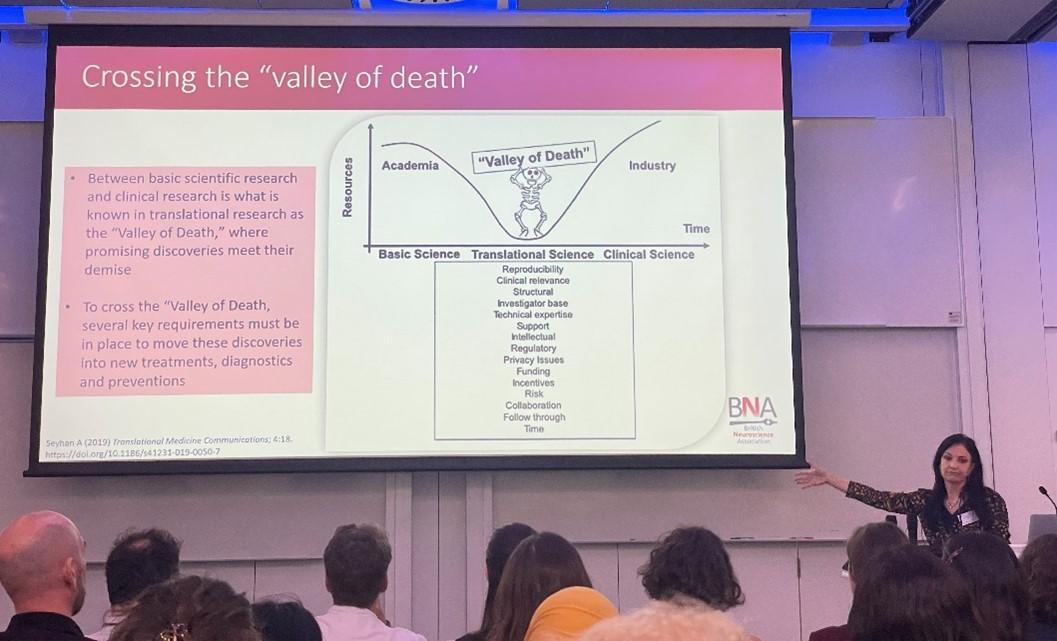
What good translation between industry and academia looks like – a perspective from academia
Following on from Jina, Geraint Rees, UCL, gave a complementary talk focusing on the people and ecosystems that make up these translational pipelines. Geraint highlighted some truly inspiring success stories including UCL Ventura where mechanical engineers at UCL and clinicians at UCLH worked together with Mercedes AMG High Performance Powertrains to develop and manufacture 10,000 CPAP devices in just one month at the beginning of the Covid-19 pandemic in the UK from mid-March to mid-April 2020. Such success required adaptability and responsivity.
Success too requires diversity of people and Geraint shared some further home-grown examples at UCL including DeepMind, in2science, Senceive, and Autolus. For universities, success involves the creation of vibrant and diverse ecosystems and Geraint described how we are creating such an ecosystem in neuroscience at UCL.
To enable this ecosystem to thrive, Geraint spoke of the need for strong fundamentals to foster excellence and bring together expertise such as the computational neuroscientists at the Gatsby Computational Neuroscience Unit who are located within the same building as the experimental neuroscientists at SWC. He also touched upon the need to overcome cultural challenges such as the lack of deep knowledge about translation and the mutual incomprehension that can result. As a solution, Geraint talked about the power of immersion in other areas and shared an innovative example called Mini MD, where basic scientists immersed themselves in an operating theatre to try to understand all the complexities of the hospital system.
The need for good systems including technology transfer companies, like UCLB, was also highlighted by Geraint and was a topic of conversation in the panel discussion and breakout sessions that followed.
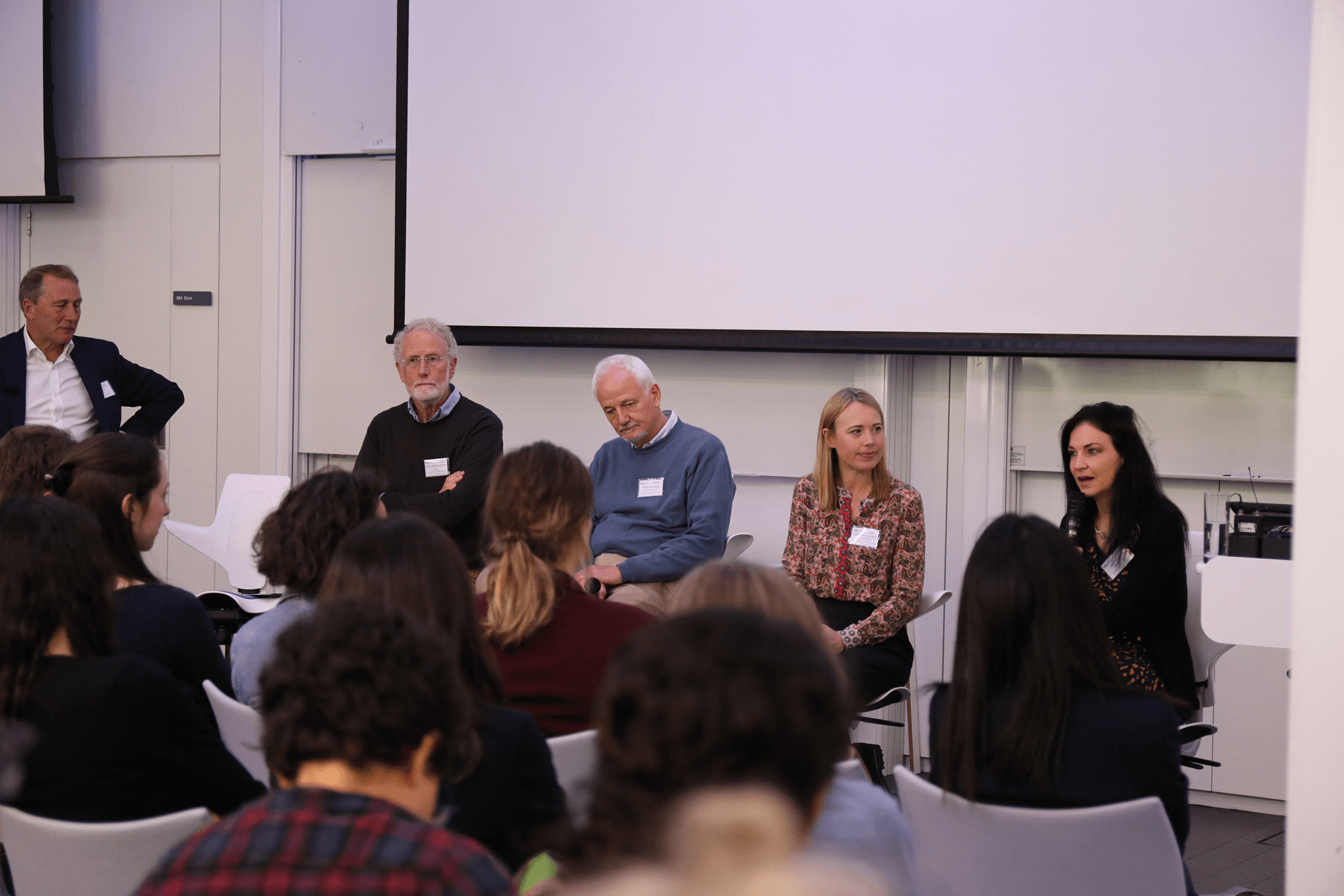
Why don’t we always achieve good translation and what are the barriers?
The panel discussion largely focused on the challenges for both industry and academia and why we don’t always achieve good translation. Chaired by Kevin Cox, the panel members Catherine Harmer, University of Oxford, Steve Wooding, Beckley Psytech Ltd, Peter McNaughton, KCL, and Jina Swartz, MSD, spoke of their personal experiences including both good and bad examples of industry-academia collaborations.
The discussion also centred on the challenges of translation in neuroscience and specifically and how this compares to other therapeutic areas such as oncology. The complexity of the central nervous system and the constellation of factors that make neuroscience challenging were discussed along with the practical issues of funding, identifying collaborative partners and the IP system.
These themes were distilled down further by Manfred Berner who spoke of three main challenges:
- How can academics and industry partners find each other?
- How can we foster better understanding of the different cultures in industry and academia?
- How can we improve structures including IP negotiations?
These important topics were then discussed in six breakout groups with key points presented back to all attendees and succinctly summarised by Manfred Berners. Some central themes emerged, many of which involved practical aspects of setting up collaborations and aligning objectives. The next steps for BNA and SWC are to devise the concrete ways to start driving forward these solutions.
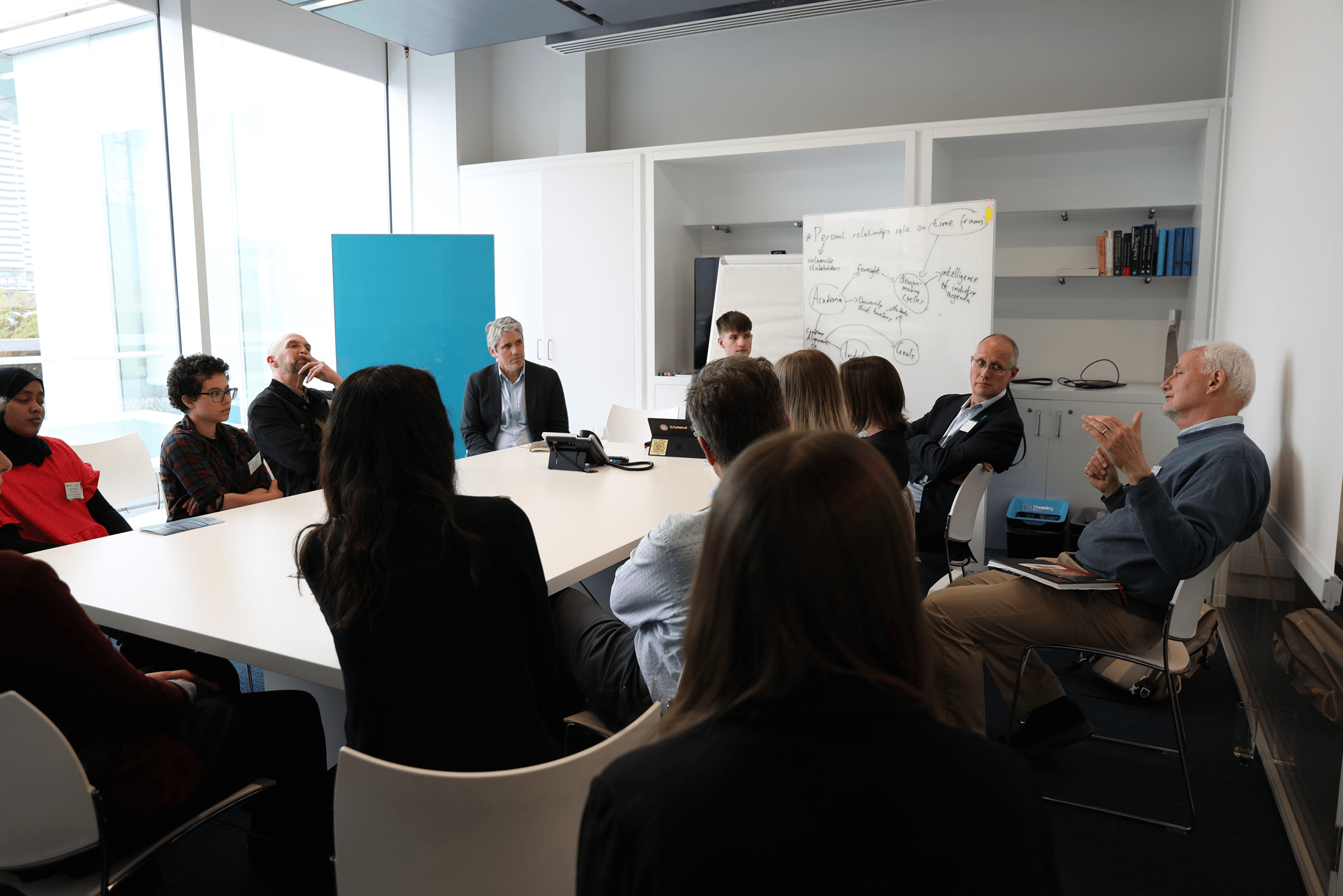
Looking to the future
Ruth McKernan, CBE, SV Health Investors gave an insightful closing plenary which focused on the progress made over the last 10 years and her predictions for the next decade. Through some fascinating examples, Ruth highlighted how partnerships across boundaries are now the norm. She shared inspiring examples such as the creation of biotech company AstronauTx, which built upon the work from the Alzheimer’s Research UK UCL Drug Discovery Institute (DDI) and received investment from the Dementia Discovery Fund (DDF).
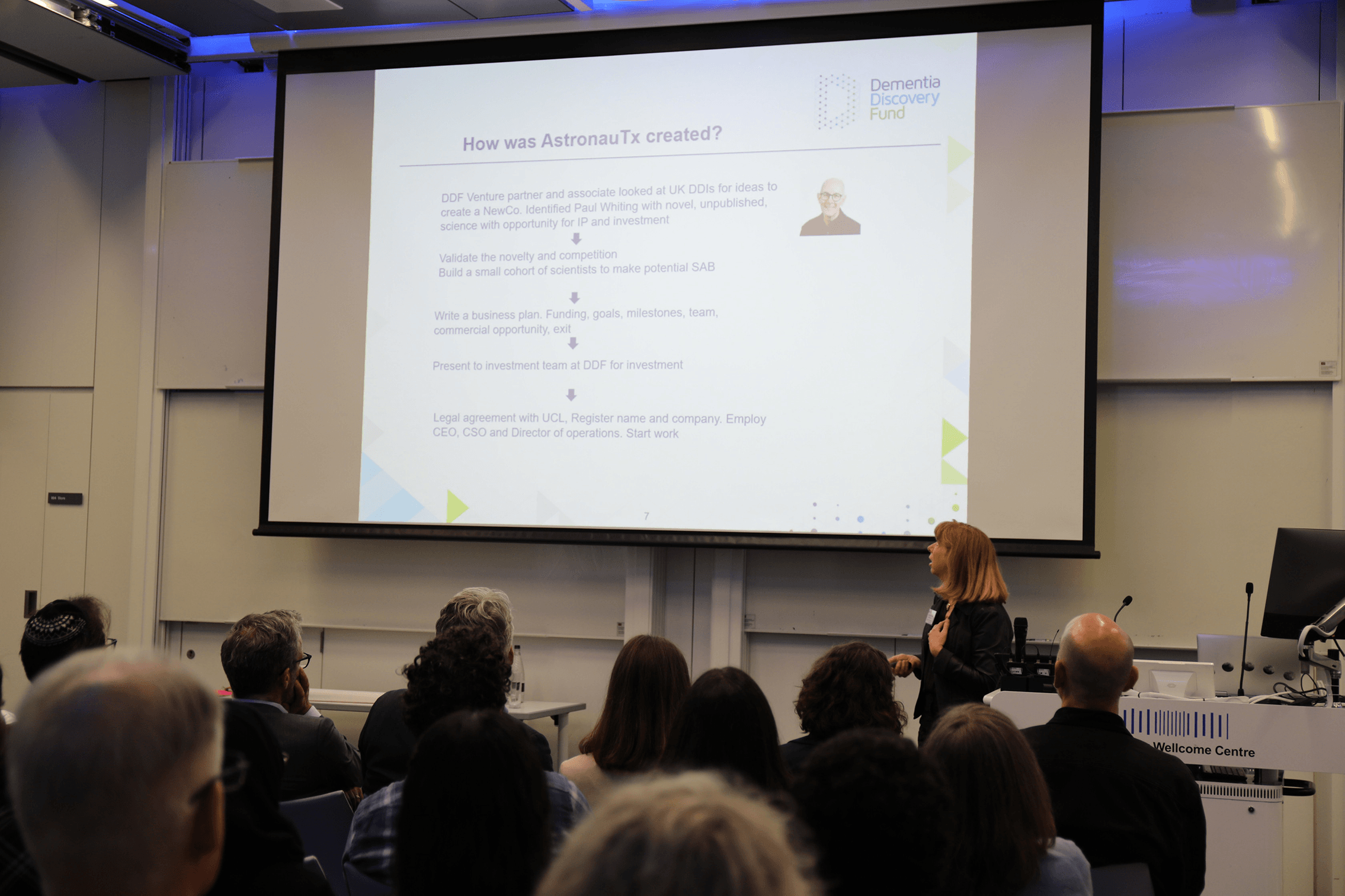
Sharing a slide from a plenary lecture she gave in 2012, Ruth talked through how far we have come in the last 10 years and which of her predictions materialised in that time. While her first prediction of treatment paradigms and patient phenotype based on real world data has not yet come to fruition and there are still few precision-treatments in CNS, real world data is now being used to find new treatments, clinical trial design and disease management. For example, Alchemab Therapeutics have developed an unbiased platform to identify patient-originated, physiologically validated therapeutics.
Ruth’s second prediction of behavioural diagnostics for psychiatric disease clearly has materialised. Huge progress has been made with digital biomarkers now being used for diagnosing psychiatric disease and neurological disease. Furthermore, digital therapeutics are now used for treating psychiatric disease and could contribute to treating neurological disease.
Unfortunately, routine use of genomics to select the best drug for each patient is not there yet in neuroscience and genomics is still at the stage of suggesting new treatments and approaches in CNS disorders. But Ruth’s last prediction of more quantitative evaluation of drugs in development is in progress and following the Covid-19 pandemic, clinical studies at home could be the new normal.
Finally, Ruth shared her predictions for 2032:
- Treatment of CNS disorders will be based on individual patient data contextualised by an NHS-wide database
- Demise of the double placebo-controlled randomised clinical trial
- Greater focus on prevention rather than cure and closed-loop monitoring of patients at home
- Digital therapeutics will be commonplace
- Gene therapy, transcription-based approaches and modifying protein expression will be treatments
- Subtype selective GABA-R agents and NaV1.7 blockers will be drugs

